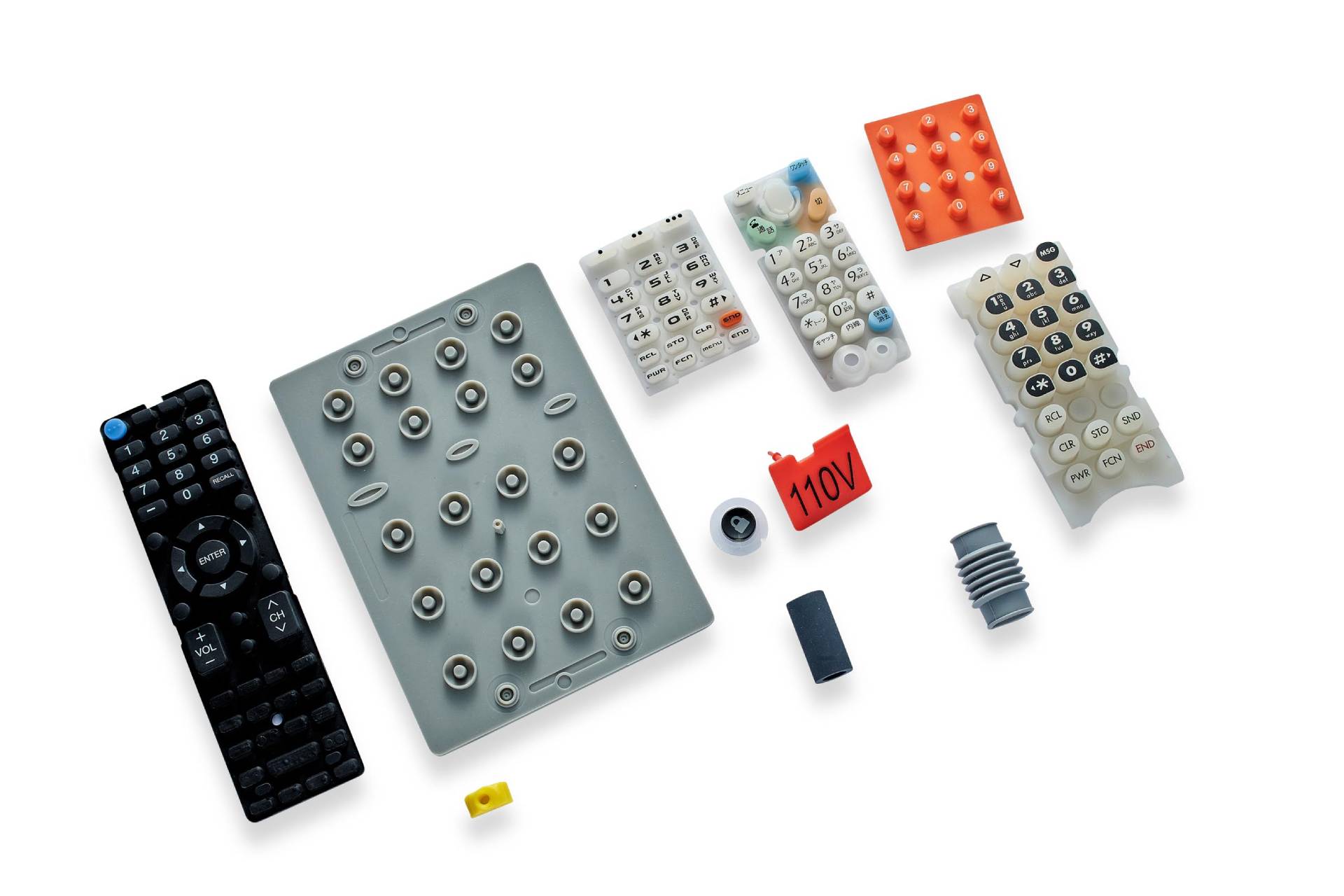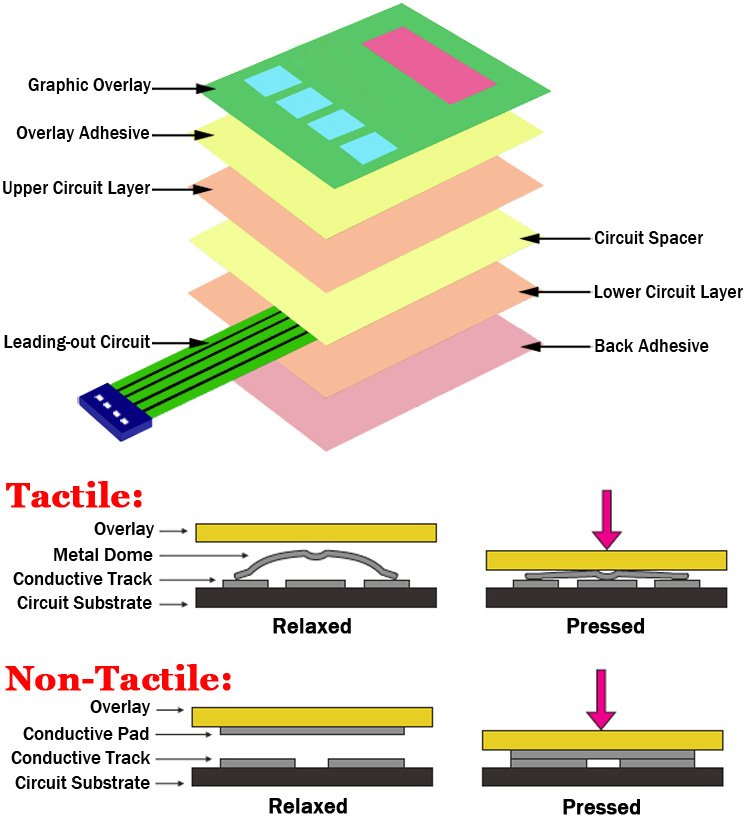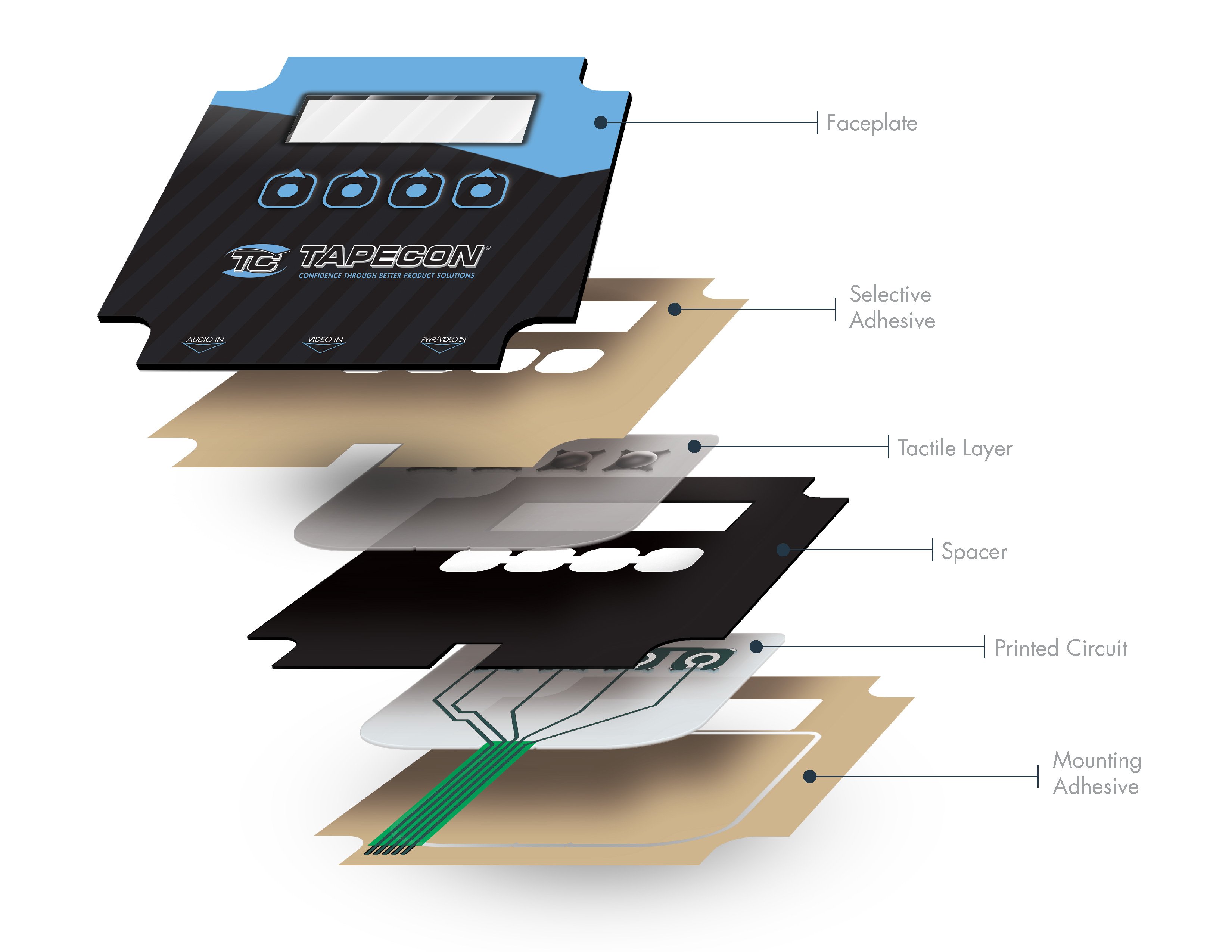Established Membrane Switch Manufacturer for Top-Tier Control Panels
Just How Membrane Switch Innovation Functions and Its Role in Customer Interface Design
Membrane button modern technology is an advanced technique that combines split materials for touch-sensitive input. When pressed, its style is composed of graphic overlays, conductive layers, and sticky elements that connect. This interaction not only completes an electrical circuit however additionally affects the general individual experience. Recognizing the complexities of this modern technology reveals its considerable influence on user interface style, prompting inquiries about its applications and future advancements in different sectors.
Comprehending Membrane Switch Technology
Membrane switch modern technology offers as a crucial component in contemporary interface design. This modern technology combines graphic overlays, touch-sensitive membrane layers, and circuit layers to create a small, dependable input technique for various devices. The design generally consists of numerous layers, consisting of a published graphic layer that allows users to interact with the gadget through responsive responses. Membrane switches are understood for their toughness, resistance to wetness, and simplicity of cleaning, making them ideal for atmospheres where traditional mechanical switches might stop working. Their low-profile layout makes it possible for smooth integration right into gadgets, adding to a sleek appearance. On top of that, Membrane buttons can be customized with numerous colors, structures, and signs, boosting individual experience and visual appeal. This versatility makes them preferred in customer electronics, clinical devices, and industrial controls, where instinctive communication is vital. Overall, Membrane switch modern technology represents a significant advancement in just how individuals engage with digital user interfaces.
Secret Elements of Membrane Changes
Membrane changes contain several vital elements that contribute to their capability and style. The conductive layer products, adhesive and support layers, and visuals overlay layout each play an essential role in ensuring suitable performance and customer communication. Understanding these components is vital for effective interface style.
Conductive Layer Materials
Conductive layer products play a crucial duty in the performance and integrity of Membrane switches. When stress is applied to the switch, these products are accountable for finishing electric circuits. Commonly, a combination of conductive inks, such as silver or carbon, is used to produce these layers. Silver conductive ink is favored for its superior conductivity and resilience, while carbon ink is often utilized for affordable applications. The option of material influences not just the electrical performance yet also the overall life expectancy of the switch. Additionally, the density and composition of conductive layers can affect responsive comments and button actuation. Picking the proper conductive product is important for making certain suitable efficiency in diverse customer interface applications.
Sticky and Assistance Layers
Glue and assistance layers are vital parts that add to the architectural honesty and capability of Membrane switches. These layers give a durable structure, making sure that the numerous elements of the Membrane switch continue to be securely adhered and correctly straightened throughout their operational life. The sticky layer assists in the accessory of the switch to the underlying surface, using sturdiness versus ecological aspects such as dampness, temperature level variations, and mechanical tension. Meanwhile, support layers enhance the switch's strength, stopping deformation during usage and contributing to a consistent tactile action. With each other, these parts play a vital duty in preserving the efficiency and long life of Membrane buttons, ultimately affecting the general user experience in interface design.
Graphic Overlay Style
Typically neglected, graphic overlay design plays a vital function in the capability and visual appeals of Membrane switches. This style mainly acts as the user interface between the individual and the electronics, offering both visual appeal and functional clarity. Reliable graphic overlays utilize color, typography, and icons to assist customers in understanding and steering controls device features. The choice of materials effects durability and tactile comments, making certain the overlay stands up to wear while keeping a positive user experience. Additionally, precise alignment of the overlay with the underlying parts is important for excellent performance. In verdict, thoughtful visuals overlay design boosts usability, adds to brand name identity, and inevitably influences customer complete satisfaction in tools utilizing Membrane switch modern technology.
The Manufacturing Process of Membrane Switches
The production process of Membrane switches includes several crucial actions that guarantee capability and toughness. A graphic overlay is made, incorporating customer interface elements and branding. This overlay is printed onto an adaptable substrate, typically polyester or polycarbonate, utilizing precision printing strategies to ascertain clearness and color accuracy.Next, sticky layers are used, followed by the integration of conductive traces, typically made from silver or carbon, which are necessary for electric connection. These traces are screen-printed or etched onto a separate layer. Hereafter, a spacer layer is included to create the necessary space in between the overlay and the circuit layer, enabling for tactile feedback when activated.Finally, the elements are set up and tested for top quality guarantee, assuring that each look these up Membrane button meets the required specs for efficiency and integrity. This precise procedure leads to a robust item fit for different applications in interface layout.
Advantages of Making Use Of Membrane Switches

Membrane switches deal countless benefits that make them a recommended selection in user interface style. One significant advantage is their light-weight and small nature, permitting structured designs in numerous applications. In addition, Membrane buttons give a sealed user interface, protecting against dust, moisture, and contaminants, which improves longevity and dependability. They are likewise extremely adjustable, making it possible for designers to develop one-of-a-kind graphics and designs customized to details individual needs.Another benefit is their cost-effectiveness, as they typically require much less material and labor compared to typical buttons. The responsive feedback of Membrane switches can be engineered to improve user experience, offering a rewarding reaction without the mass of mechanical elements. Moreover, Membrane buttons can be easily integrated into varied environments, such as clinical gadgets, industrial tools, and customer electronics. Overall, these benefits highlight the expanding appeal of Membrane buttons in contemporary interface design.
Applications in Numerous Industries
Extensively used throughout numerous markets, Membrane switch innovation has discovered its place in applications ranging from medical gadgets to customer electronics. In the medical care sector, these switches are indispensable to gadgets such as analysis equipment and person surveillance systems, providing long lasting, easy-to-clean interfaces that hold up against sanitation procedures. The automotive market employs Membrane switches in control panels and control panels, supplying reliable operation in difficult environments.Consumer electronics, consisting of home devices and video gaming consoles, take advantage of the sleek style and customizability of Membrane switches, improving customer communication. In addition, commercial machinery makes use of these buttons for control board, making sure resistance to dirt and wetness while keeping functionality.Moreover, the aerospace and armed forces markets utilize Membrane switches for rugged applications, where dependability and performance are important. Generally, Membrane button modern technology offers varied markets by incorporating performance, longevity, and aesthetic appeal, making it a flexible selection for modern customer interfaces.

Creating Individual User Interfaces With Membrane Changes
When designing interface with Membrane switches, mindful factor to consider of both functionality and aesthetics is necessary. Membrane switches supply a sleek, low-profile design that can boost aesthetic charm while preserving use. Designers have to focus on switch design, guaranteeing intuitive positioning for simplicity of procedure. The responsive responses given by the Membrane button is important; it can affect customer fulfillment and general experience.Additionally, shade and visuals components must straighten with the brand identity, reinforcing acknowledgment and experience. Picking long lasting products that withstand deterioration is likewise vital, as long life adds to use over time. Integrating backlighting can enhance exposure in various illumination problems, further boosting user interaction. Ultimately, a well-designed Membrane button interface equilibriums both kind and function, ensuring that the customer experience is both effective and interesting, fulfilling the needs of varied applications across industries.
Future Fads in Membrane Switch Technology
As Membrane switch innovation advances, the assimilation of wise performances is becoming significantly famous. These advancements make it possible for enhanced interactivity and connection within user interfaces (membrane switch manufacturer). Furthermore, the change in the direction of green products mirrors a growing commitment to sustainability in style methods
Smart Membrane Switches Over

Eco-Friendly Materials Use
Among the improvements in Membrane button modern technology, a substantial fad is emerging in the direction of making use of environmentally friendly products. Producers are increasingly prioritizing sustainability by integrating non-toxic inks and naturally degradable plastics, decreasing environmental effect. This shift not only aligns with international environmental criteria however likewise addresses consumer demand for greener products. Developments in material science have actually made it possible for the growth of long lasting, eco-friendly options that keep efficiency without jeopardizing quality. These products use similar performance to conventional choices while lessening waste and poisoning. As industries become a lot more eco-conscious, the integration of sustainable techniques in Membrane switch production is expected to rise, reinforcing a commitment to environmental obligation and leading the way for more lasting customer interface solutions in the future.
Often Asked Concerns
How Do Membrane Switches Differ From Conventional Mechanical Buttons?
Membrane switches over differ from standard mechanical switches mainly in building and construction and operation. They utilize flexible layers that produce a secured interface, whereas mechanical switches depend on physical activity and call, leading to distinctive sturdiness and tactile comments characteristics.
Can Membrane Changes Be Custom-made for Particular Applications?
Membrane switches can undoubtedly be tailored for details applications - membrane switch manufacturer. Makers design them to fulfill special demands, allowing look at more info for tailored layouts, graphics, and performances that enhance customer interaction and fit certain operational demands effectively
What Is the Lifespan of a Membrane Layer Switch?
The life expectancy of a membrane switch typically ranges from 1 to 5 million actuations, depending upon elements such as material quality, environmental problems, and usage frequency. Normal screening can assist determine its durability and dependability in applications.
Are Membrane Switches Water-proof or Immune to Chemicals?
Membrane switches can be designed to be water-proof and immune to chemicals, depending on the materials used and making procedures. Proper sealing and protective coverings enhance their resilience in different ecological conditions and applications.
How Do Membrane Switches Effect Device Energy Usage?
Membrane buttons can greatly affect tool energy intake by making sure reliable operation. Their reduced power needs throughout activation help minimize energy usage, adding to longer battery life and overall improved efficiency in electronic tools. Membrane buttons are recognized for their toughness, resistance to dampness, and simplicity of cleaning, making them ideal for settings where traditional mechanical switches might fail. The automotive market uses Membrane buttons in control panels and control panels, providing trusted operation in challenging environments.Consumer electronic devices, including home devices and gaming consoles, benefit from the sleek style and customizability of Membrane buttons, improving customer communication. Additionally, commercial equipment makes use of these buttons for control panels, making sure resistance to dirt and moisture while keeping functionality.Moreover, the aerospace and armed forces sectors use Membrane switches for rugged applications, where dependability and efficiency are important. The advancement of Membrane switch technology is going into an exciting stage with the introduction of clever Membrane buttons, which incorporate sophisticated attributes and performances. Membrane changes differ from typical mechanical buttons largely in building and construction and operation.